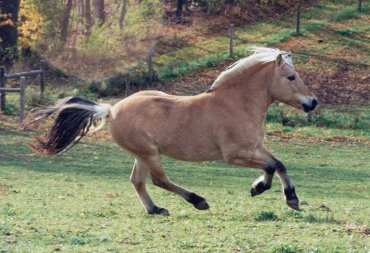
Photo provided by Mike May, the Norwegian Fjord Horse Registry
NORWEGIAN FJORD HORSE:
|
General Information Legal Cluster Bio-Geographic Cluster Trade Cluster Environment Cluster Other Clusters |
|
|
|
|
|
|
|
|
|

Photo provided by Mike May, the Norwegian Fjord Horse Registry
"The eyes should be like the mountain lakes on a midsummer evening, big and bright. A bold bearing of the neck like a lad from the mountains on his way to his beloved. Well-defined withers like the contours of the mountains set against an evening sky. The temperament as lively as a waterfall in spring, and still good-natured" (Norwegian description of the Fjord Horse).
The Issue
The Norwegian Fjord Horse is one of the oldest and purest breed of horses in the world. It is estimated that the original Fjord Horse migrated to Norway and was domesticated in the country approximately 4,000 years ago. Moreover, archeologists examining Viking burial sites have discovered that the Fjord Horse has been bred in Norway for at least 2,000 years. As an integral part of life in Norway for thousands of years, the Fjord Horse has become an important national symbol for the Norwegian people and is central to their culture and history. Due to growing international interest in the breeding and use of the Fjord Horse in recent decades, many Norwegians demanded that their country be legally pronounced the geographical origin of the breed. Efforts have carried these claims internationally, succeeding in Norway being granted status as the official “motherland” of the Fjord, as established by international conventions.

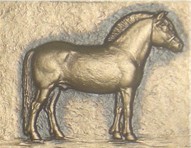
Throughout Norway’s history the Fjord Horse has been used by Norwegians for work and play. Due to the breed’s strength and durability, for centuries, the Fjord was indispensable at the farms in the steep fjord landscape of Western Norway. Farmers used the Fjord as a general-purpose pony to pull loads up to their farms in addition to working in the fields. Besides its value as a farm horse, the Fjord was essential as a means of transportation of people, food and equipment through the region’s mountainous terrain. Many farmers who owned Fjord Horses were able to profit by hiring out their horses to visiting tourists as well as for local transportation.
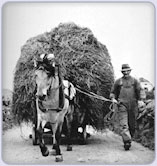
Today, the Fjord Horse still plays a role in the agriculture and forestry industries, but is primarily used for riding, driving and touring. In fact, due to the Fjord’s friendly demeanor, it is widely used in riding schools for the disabled. In the tourist industry along the West Country fjords of Norway, the horse continues to be an important means of transportation and as a representative of the Norwegian culture. As an example, during the Winter Olympics in Lillehammer in 1994, Fjord Horses were responsible for driving winning competitors and celebrities to the different events. Furthermore, the Fjord Horse has become an important national symbol in Norway, and preserving this breed as it has existed in Norway for thousands of years have become a major issue. Growing communities of Fjord Horse enthusiasts, celebrating the Fjord’s long history as a faithful work horse of the Norwegian people, have blossomed throughout the country over the last few decades. These associations maintain individual membership lists, and report to the national coordinators of all Fjord Horse breeding- namely, the government agencies, Norwegian Horse Center (NHS) and Norwegian Fjord Horse Association (NFL). Norway’s status as the Fjord Horses’ motherland grants the country the rights to organize and formulate the officials breeding guidelines. Within Norway, the NHS and NFA work with the local member associations in carrying out the rigid breeding guidelines. Both the national and local fjord horse organizations hold shows and competitions all throughout the year, which bring together thousands of Fjord Horse enthusiasts and further promote the growth and protection of the breed in Norway.
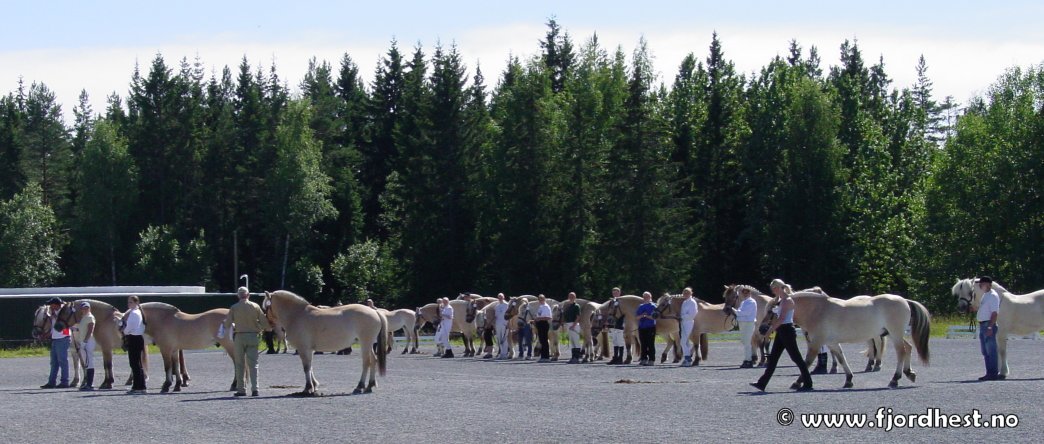
Photo by Ingvild N. Sveen, Norwegian Fjord Horse Association.
National Organizations
Norwegian Fjord Horse Association (NFL)
The Norwegian Fjord Horse Association was founded in 1949, and is responsible for the national aspect of the Fjord Horse, including the formulation of the official Fjord Horse breeding plan. The NFL’s main goal is to unite Fjord Horse enthusiasts and preserve the genetic purity of the breed. The NFL is composed of regional, district and local associations, which maintain individual boards and coordinate their own activities. Some of these associations came into existence long prior the NFL; in fact, some of the first local associations were formed as early as 1899. Today the NFL has about 1,300 members, and issues the magazine “Fjord Horse” four times a year.
Norwegian Horse Center (NHS)
The Norwegian Horse Center aims to improve the overall quality of horses and breeding practices in Norway, and serves as the supreme institution of education for horse officials and breeding guidelines. The NHS organizes annual seminars and performs outreach activities related to breeding principles across the country, and is essentially responsible for all horse breeds in Norway, which includes the Fjord Horse. The Center is financed by the government and other member and registration fees stemming from seminars and competitions and shows. The NHS consists of 17 national horse associations, and representatives from each of these make up the NHS board. The chairman of the Board is appointed by the Ministry of Agriculture, which also must approve the budget.
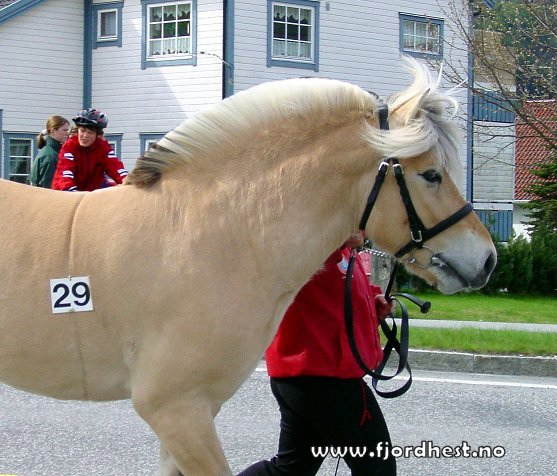
Photo by Ingvild N. Sveen, Norwegian Fjord Horse Association.
Some Local Fjord Horse Breeding Associations in Norway:
Nordfjord Fjordhestelag
Nordfjord Fjord Horse Association was established in Nordfjordeid as early as 1919, where there is a large number of Fjords Horses, and a long documented history of breeding.
Osterøy Fjordhestelag
Osterøy Fjordhestelag is fjord horse association on the small island of Oster øy in the Hordaland district of Western Norway, and was founded in 1939 as a breeding organization for the Fjord Horse. This association maintains a member list of approximately 130 members, and is very active in the local community. The association is financed through membership fees, cake sales and other lotteries.
International Trade and Cooperation
Over the course of the last few decades, fascination with the Fjord Horse breed type has expanded well beyond Norway’s borders. In fact, today one can find avid Fjord Horse enthusiasts and breeding communities much like those in Norway in numerous countries all over the world. In these countries, there exist Fjord Horse registries committed to preserving the purity and expansion of the breed, operating under the same guidelines as the Norwegian associations. During the Rio Convention in 1992, Norway first claimed the geographical origin of the Fjord Horse, which subsequently became outlined in the Rio Convention on Bio-diversity. In 1996, the European Union’s Convention on Domestic Animals declared Norway as the official “motherland” of the Fjord Horse breed. Since this provides Norway with the sole responsibility of supervising and managing domestic and global use and breeding of the Fjord Horse, the need for improved mechanisms of coordination and information sharing quickly became evident.
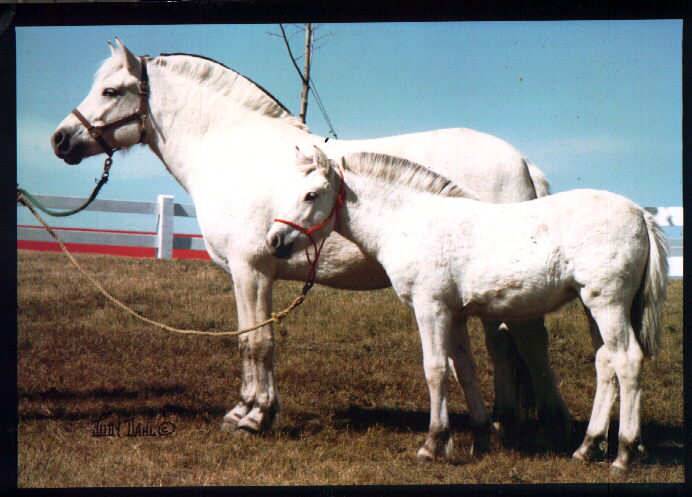
Photo provided by Mike May, the Norwegian Fjord Horse Registry
Aiming to facilitate and oversee breeding practices of the Fjord Horse outside Norway’s borders, the association Fjord Horse International (FHI) was founded in Norway in 1997. FHI work internationally, mostly with export and information. Specifically, the goals of the FHI are the extension of breeding, use and further growth of the Fjord Horse breed. The FHI member list includes national organizations, sub-national organizations, private members as well as other institutions and supporters. The FHI mandate also contains provisions to protect the genetic purity of the Fjord Horse breed, which the association aims to accomplish through supervision of breeding practices and studbook requirements across the world. Each year the FHI hosts an international conference for representatives from all countries with Fjord Horse societies and registries. At this conference, breeding guidelines, international coordination and acknowledgement of studbooks are discussed. All interested breeding organizations are invited to take part in the conference, whether they are members of the FHI or not. In addition, the FHI organizes courses for judges and gives advice on the selection of breeding horses. In accordance with the official breeding plan of the NHS, Fjord Horse registries in other countries must outline specific rules for how breeding and sale of Fjord Horses is carried out. For example, the official goals of the Norwegian Fjord Registry in the US are: to maintain a Registry Book for Norwegian Fjord Horses in order to preserve their purity and original type in North America, to encourage good horsemanship while developing educational programs and the versatile uses of this all purpose family horse in all activities including riding, driving and work, to engage in research and compile statistics of the Fjord Horse industry and furnish official and authentic information to the general public.
The FHI is the central organ in terms of export of the Norwegian Fjord Horse. All export of Fjord Horses from Norway to other countries must be approved by the NHS based on their objective to preserve the purity of the breed. Before a Fjord may be exported, it must be DNA-tested to ensure that it, in fact, fits the genetic profile of a Fjord. Yet, today, only a small number of Fjord Horses are sold in Norway to other countries, on average 7-8 horses a year. These sales usually take place at the horse shows that are held throughout the year. The reason for the low levels of export activity is that countries in which there are sizable Fjord Horse stocks, breeding within those Fjords tends to be the focus. In most cases, initial export of Fjords to those countries took place decades ago, and the current stocks are therefore descendants of original Norwegian Fjord Horse. For example, Norway exported approximately 22 Fjords to the US in the early 1950s. Their descendants make up today’s growing stock of Fjords in North American. Another issue that has become relevant in recent year with the rapid advancement of bio-technology is “export” of semen, and the use of artificial insemination. These practices have become prevalent within the Fjord Horse industry, and are carried out domestically as well as between countries. When Norway sells Fjord Horse semen to breeders abroad, the same guidelines apply as does for live horses. The semen must be DNA-tested by the NHS prior to any sale or trade, and can only come from a registered stallion. Within individual breeding countries, such as Germany, France and the US, sale in frozen semen is also widespread, and is carried out according to specific guidelines.
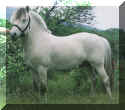
Photo provided by Mike May, the Norwegian Fjord Horse Registry
The current membership of Fjord Horse International:
National Fjord Horse Organizations:
1.Association Française du Cheval Fjord (France)
2.Het Belgisch Fjordenpaarden Stamboek (Belgium)
3.Fjordhesteavlen (Denmark)
4.Fjord Horse Registry of Scotland
5.Fjord Pferde Vereinigung Schweiz (Switzerland)
6.Het Nederlandse Fjordenpaarden Stamboek (The Netherlands)
7.Interessen Gemeinschaft Fjordpferde IGF, (Germany)
8.Norges Fjordhestlag (Norway)
9.Norwegian Fjord Horse Registry, NFHR (USA)
10.Svenska Fjordhästforeningen (Sweden)
Sub-national Fjord Horse Organizations (within Norway):
1.Austre Ryfylke Fjord Horse Association
2.Dalane Fjord Horse Association
3.Eid Fjord Horse Association
4.Gloppen and Hyen Fjord Horse Association
5.Hol and Ål Fjord Horse Association
6.Indre Sunnhordland Fjord Horse Association
7.Kvinnherad Fjord Horse Association
8.Jæren Fjord Horse Association
9.Midthordland Fjord Horse Association
10.Midtre Nordfjord Fjord Horse Association
11.Njård Fjord Horse Association
12.Sunnfjord Fjord Horse Association
13.Vestfold Fjord Horse Association
14.Voss Fjord Horse Association
Private members:
1.Arne Presthus
2.B.D. Odfjell jr.
3.Catherine Lassesen
4.Rune Lassesen
5.Eike Schön- Petersen
6.Elke Wegman
7.Fjord-Fan-Shop-Bayern
8.Gunther Grulich
9.Josef und Andreas Borsbach
10.Jürgen und Silke Eitenmüller
11.Koen Brouwer
12.Reinhold Eitenmüller
Institutions and supporters:
1. Norsk Fjordhestsenter A/S (NFS)
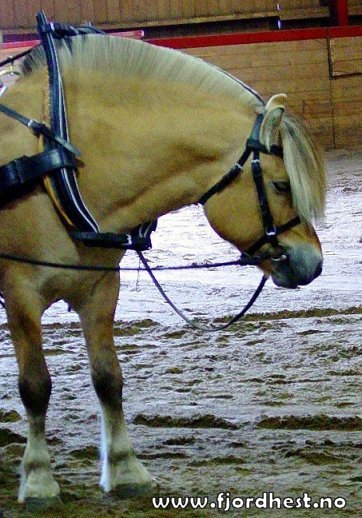
Photo by Ingvild N. Sveen, Norwegian Fjord Horse Association.
Physical Characteristics
Interestingly, although it is called a horse, the Fjord is technically a pony. Most Fjords are only about 54 to 58 inches at maturity. Yet, despite its small size, it has a strong built and is traditionally considered to be powerful hard worker. It is this work ethic that Norwegians have praised for centuries, and has made the Fjord such a treasured animal in Norway.
In terms of its physical appearance, the Fjord possesses some distinguishable characteristics. The Fjord’s head is medium in size and well-defined, with a broad, flat forehead and a straight or slightly dished face. Its eyes are large and its ears are small and alert, whereas the neck is well-muscled and crested. The Fjord's body is short, coupled with good depth, large heart girth, and well-developed muscles. Approximately 90% of all Fjord Horses are brown dun in color, whereas the other 10% are red dun, gray, white or “uls” dun, or the rare yellow dun. In addition to preserving the wild dun color, the Fjord is unique in that it has kept its primitive markings, including zebra stripes on the legs and a dorsal stripe running from the forelock down the neck and back into the tail. Some Fjords also possess dark stripes over the withers. Another distinctive characteristic of the Fjord is its mane; the center hair of the mane is dark while the outer hair is white. Common practice is to cut the center hairs of the mane short so that it stands straight up. The mane is then traditionally trimmed in a crescent shape to emphasize the graceful curve of the Fjord’s neck; the white outer hairs are trimmed slightly shorter than the dark inner hair to display the dramatic stripe.
In the early 1900s, specific breeding guidelines for the Fjord Horse were not established; hence, cross-breeding did occur between Fjords and other breed types. However, with the growth in the perception of the Fjord Horse as a Norwegian cultural heritage during the course of the century, advocates of a pure Fjord Horse were becoming increasingly vocal, and eventually came together in establishing protection mechanisms for the original Fjord. At this point, there were not international guidelines and Norway was not recognized as the motherland of the Fjord, but through these early efforts, which effectively initiated controlled and systematic breeding practices, the Fjord Horse has today’s become one of the world’s only horse breeds to retain all of its original physical characteristics, and is today in a strong position within Norway and internationally.
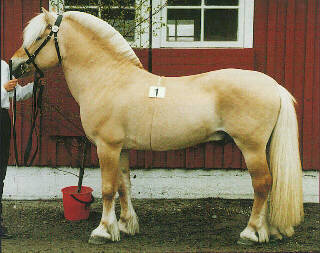
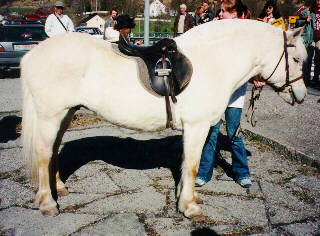
Photos provided by Mike May, the Norwegian Fjord Horse Registry
1) Alpaca, May 2002
2) Camelid, June 1997
3) Cattle Trade, September 1992
4) Deer Trade, May 1996
5) Dolly, March 2000
6) Dromedary, January 1998
7) Mad Cow Disease, April 1996
8) Ostrich, June 1996
9) Parrot Trade, June 1992
10) Rhino, December 1996
The above cases all have some relvance vis-a-vis the Norwegian Fjord Horse. Of the above cases “Protect the Dromedary” is the most relevant to this case study. That case examines the domestication of the Dromedary Camel. The “Dolly” case study examines the controversial cloning of a sheep in Scotland. With respect to the case of Norwegian Fjord Horses, genetics is quite important. In efforts to maintain genetic purity of the breed, all Fjords must be DNA-tested prior to being registered in the “Studbook.” Also, artificial insemination of Fjord mares occur in many countries with Fjord stocks. The “Alpaca” case examines the cultural and ethnical significance of the Alpaca in the Peru and Andean region. With respect to the Norwegian Fjord Horse, the cultural and historical ties of the Fjord to Norway’s people and national traditions are startling and form the basis of my case study. Another relevant previous case study is “The Introduction of Sheep into Bolivia’s Herding Industry,” which focuses on the export and production of sheep as part of Bolivia’s economy. Export of the Fjord Horse is a contentious issue when it comes to maintaining genetic purity within the breed. Norway’s Fjord Horse Registry aims to prevent mixing of other breeds with the Fjord, and there are also official registries in a number of countries across the world. Other relevant cases include “Deer Trade,” which analyzes the commercialization of the deer industry and transportation of deer across borders. "Ostrich Farming” examines issues involved with breeding, farming and export of ostrich. “Cattle Trade” looks at the environmental and economical implication of cattle trade in Botswana, whereas the case study of “Parrot Trade” is an examination of legal and illegal trading of parrots. Again, these cases relate to this study, as trade issues involving the Fjord Horse are of great national concern and are becoming increasingly relevant. Furthermore, “Rhino” considers the protection and reservation of the Rhino in Africa, whereas “Mad Cow Disease” case study sheds light on the potential implications of disease with respect to trade.
Discourse and Status: Agreement and Complete
The legal status of the geographical origin of the Fjord Horse has been addressed and is completed. During the 1992 Conference in Rio, Norway claimed to be the home of the original Fjord Horse. In 1996, the Norwegian Fjord Horse became a protected geographical indication under the European Union’s Convention on Domestic Animals. This Convention declares Norway as the motherland of the Fjord Horse, which is particularly noteworthy given Norway’s status as a non-EU member. Yet, as outlined in Directive 90/427/EEC, a stud book of origin may be managed by an organization within a non-EU state. The EU Commission register provides Norway the task of preserving and developing the Fjord Horse breed type. Regarding to this fact, government agencies Norges Fjordhestelag and Norsk Hestesenter (NHS) have strengthened their responsibility for the breed and started specific international promotion of the Fjord Horse.
Breeding and Studbook keeping
In order for a Fjord Horse to be registered with the NHS it must go through DNA testing. The NHS maintains a comprehensive listing of all Fjord Horses, and is responsible for devising and administering the official breeding plan. The aims stated in the current breeding goals are to preserve and improve the breed’s original character and type, as well as to satisfy today’s needs for a versatile animal suitable for the whole family. At the end of the covering season, stallion owners must send a report stating which mares have been covered, and mare owners are then sent a slip by the NHS. On this basis, a foal is registered. An important tradition in Norwegian horse breeding is also the mountain grazing system, whereby mares run with an approved stallion on areas administered by the NHS.
The first Studbook for the Fjord Horse was published in 1910, and is now issued every three years, with separate sections for mares and stallions. In addition, studbooks are currently maintained in a number of countries, including the UK, the US, Belgium, Denmark, Germany, the Netherlands, Canada, Scotland and Sweden among others. The registries in these countries must all report to the Fjord Horse International Association (FHIA), which organizes all international breeding of the Fjord Horse. The FHIA secretariat is located at the NHS offices in the Nordfjordeid in Western Norway. Each May, a meeting is held in Nordfjordeid for representatives from all the international registries.
Forum and Scope: Norway and Unilateral
Decision Breadth: 1 ( Norway)
Norway’s legal status as the motherland of the Fjord Horse allows the country to monitor registries and breeding of the Fjord Horse worldwide. All breeding in Norway is controlled by the government agency, NHS, and only champion stock can be exported.
Legal Standing: Law/treaty
As for the case of the Norwegian Fjord Horse, there appears to be no current disputes.
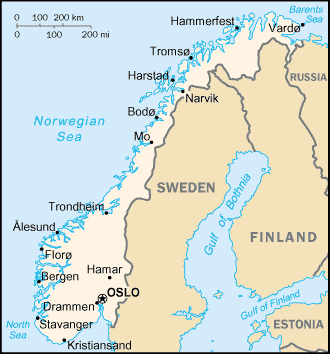
Geographic Locations
a.. Geographic Domain: Europe
b. Geographic Site: Northern Europe
c. Geographic Impact: Norway
The Norwegian Fjord Horse can be found throughout Norway, but is mainly bred in the Western regions of the country.
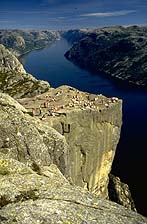
Sub-National Factors: Yes
Type of Habitat: TemperateNorway occupies the western part of the Scandinavian peninsula and shares borders with Sweden, Finland and Russia, as well as the North Sea and the North Atlantic Ocean. Norway has a long coastline pierced by fjords and a mountainous interior that includes some of Europe's largest glaciers. Over 500 sq km of Norway lies north of the Arctic Circle, but the country's western coast usually remains ice free year-round thanks to the warm waters of the Gulf Stream. Given Norway’s extreme northerly position, its mainland climate is surprisingly mild. Coastal areas have a temperate climate, especially in the summer months. This is due to the trade winds forced across the Atlantic Ocean by the American continent and the warm currents flowing north from the Equator towards the Norwegian Sea. The mountainous inland regions experience more extreme ranges of temperatures, and the northern highlands suffer Arctic conditions. The high mountain ranges dividing mainland Norway provide protection from precipitation to large areas of inland eastern Norway, giving this area a more continental climate than would be expected in light of its proximity to the coast. Some of these areas east of the mountains have an annual rainfall of less than 300 mm. Most of the precipitation from the sea falls along the west coast of Norway, with some areas recording a maximum rainfall of 3000 mm annually. The strength and direction of the wind in Norway varies greatly as a result of fast-moving pressure fronts, and the winds along the coast and in the mountains are often quite strong.
Type of Measure: Import Standard
Direct v. Indirect Impacts: Direct
Relation of Trade Measure to Environmental Impact:a. Directly Related to Product: Yes, horse
b. Indirectly Related to Product: Yes, semen
c. Not Related to Product: No
d. Related to Process: Geographic Indication
Trade Product Identification: Horse
Impact of Trade Restriction: HighIndustry Sector: Culture
Exporters and Importers: Norway and Many
Environmental Problem Type: Culture
Name, Type, and Diversity of Species
Name: Norwegian Fjord Horse
Type: Horse/Pony
Diversity: There are between 6,000 and 8,000 Fjord Horses in Norway, which constitutes approximately 16% of the world's Fjord Horses. Norwegian Fjords are bred in a large number of countries throughout the world, including Chile in South America, Canada and the US in North America, Australia and New Zealand, Israel and Japan, in addition to most of the European countries.
Resource Impact and EffectUrgency and Lifetime: Lifetime
Substitutes: None
Trans-Boundary Issues: Yes
Rights: YesOther Relevant Websites and Literature:
2004 Official Fjord Horse Breeding Plan
Canadian Fjord Horse Association
The Fjord Horse National Stud Book Association of Great Britain
Great thanks to Mike May, Executive Director of the Norwegian Fjord Registry and Ingvild N. Sveen at the Norwegian Fjord Horse Association, for contributing valuable information and photos.